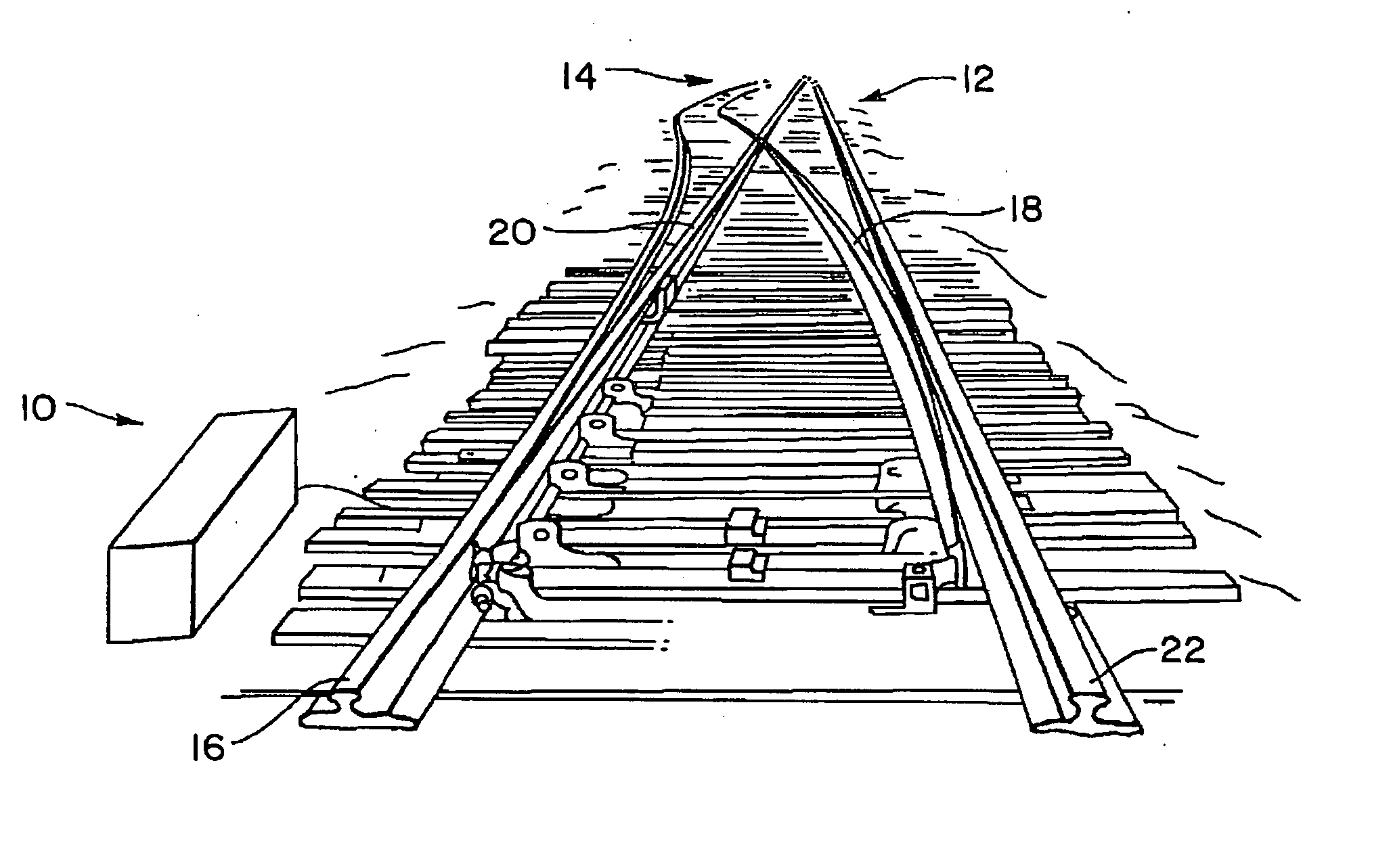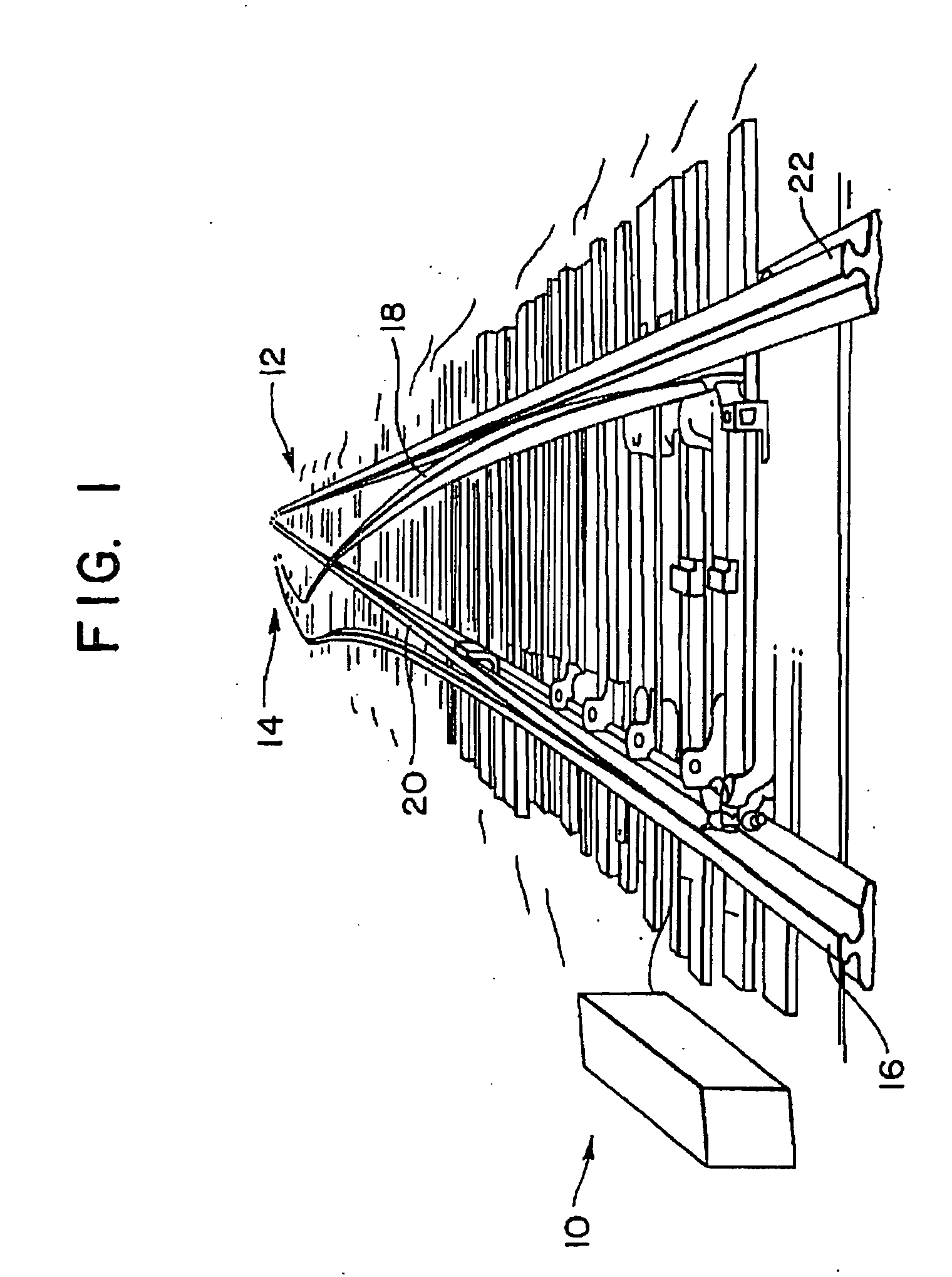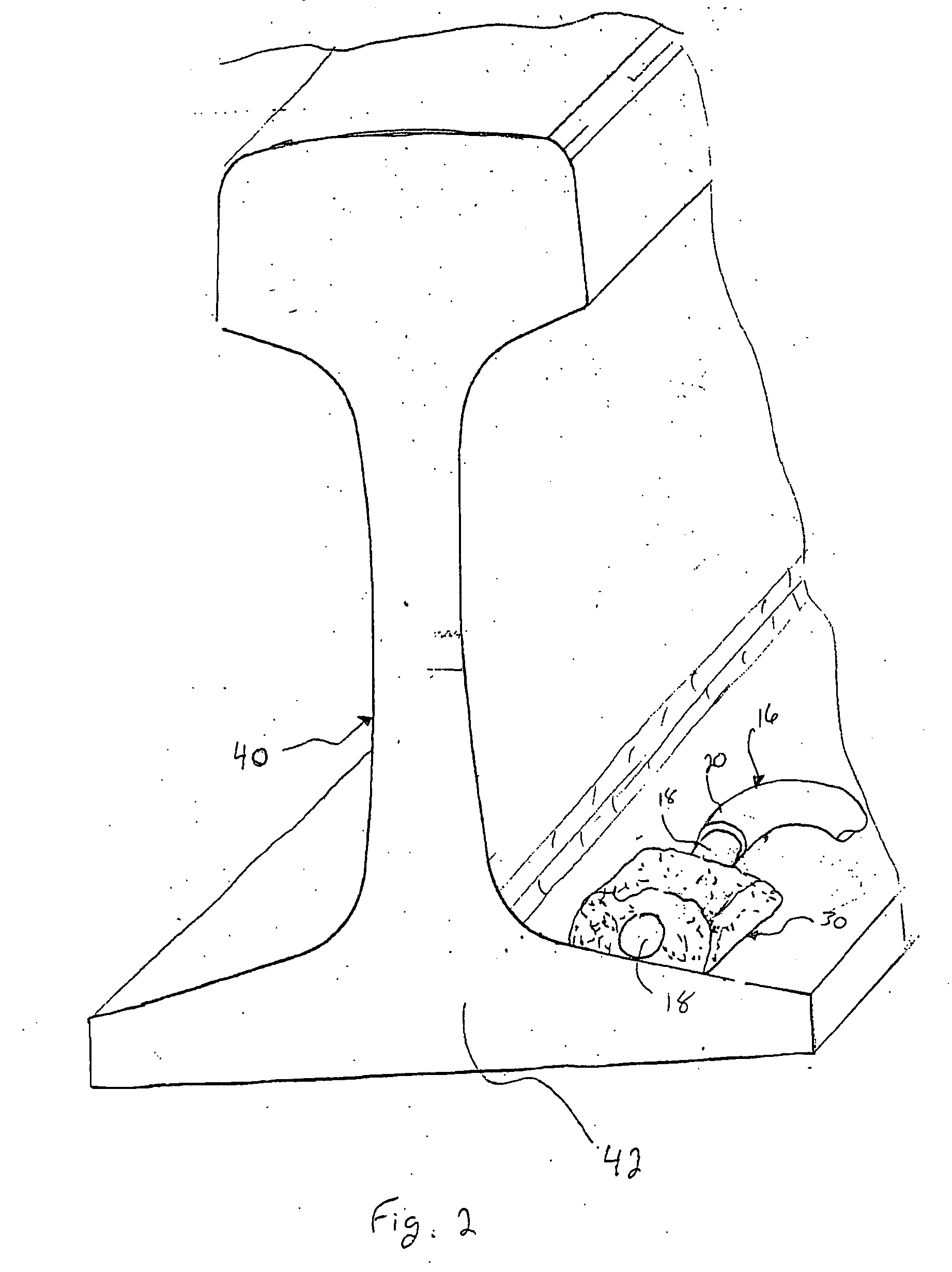Conductive railroad attachment
a technology of conductive rails and rail tracks, applied in rail devices, power rails, ways, etc., can solve problems such as deterioration of electrical connections, frequent maintenance of intermittent electrical connections, and stress concentration of the area of track rails
- Summary
- Abstract
- Description
- Claims
- Application Information
AI Technical Summary
Benefits of technology
Problems solved by technology
Method used
Image
Examples
Embodiment Construction
[0029] The present invention is directed to the use of an electrically conductive adhesive to connect a signal conductor to a railroad track rail. Though discussed herein in relation to interconnecting a switching box to track rail via a signal conductor, it will be appreciated that the invention is applicable to the electrical interconnection of any electrical conductor to a track rail for any purpose.
[0030] Referring to FIG. 1, a section of railroad track is generally identified by the reference numeral 10. As shown, the section of railroad track 10 includes a switching mechanism to switch trains between first and second tracks 12, 14. Each set of tracks 12, 14 includes two of track rails. As shown, the first track 12 includes a switching rail 12a and a stationary or stock rail 12b (also known as a running rail). Likewise, the second track 14 includes a stock rail 14a and a switching rail 14b. For purposes of controlling traffic, each track rail 12, 14 is electrically interconnec...
PUM
| Property | Measurement | Unit |
|---|---|---|
| temperature | aaaaa | aaaaa |
| temperature | aaaaa | aaaaa |
| electrically | aaaaa | aaaaa |
Abstract
Description
Claims
Application Information
 Login to View More
Login to View More - R&D
- Intellectual Property
- Life Sciences
- Materials
- Tech Scout
- Unparalleled Data Quality
- Higher Quality Content
- 60% Fewer Hallucinations
Browse by: Latest US Patents, China's latest patents, Technical Efficacy Thesaurus, Application Domain, Technology Topic, Popular Technical Reports.
© 2025 PatSnap. All rights reserved.Legal|Privacy policy|Modern Slavery Act Transparency Statement|Sitemap|About US| Contact US: help@patsnap.com



